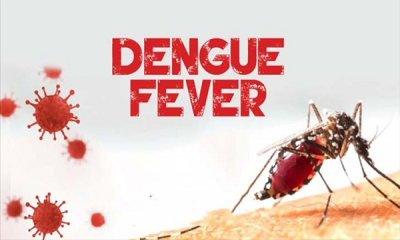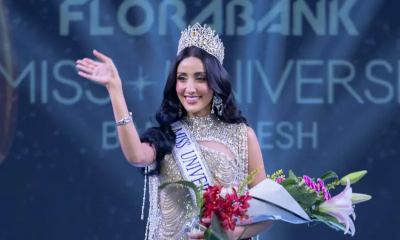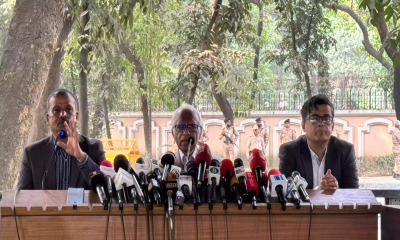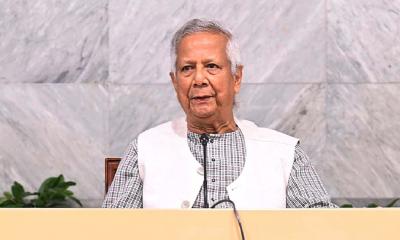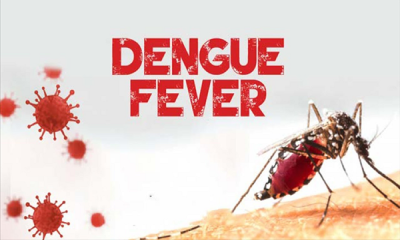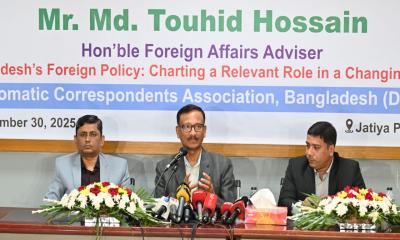He Jiankui seemed nervous.
At the time, he was an obscure researcher working at the Southern University of Science and Technology in Shenzhen, China. But he had been working on a top-secret project for the last two years – and he was about to take to the podium at the International Summit on Human Genome Editing to announce the results. There was a general buzz of excitement in the air. The audience looked on anxiously. People started filming on their phones.
Jiankui had made the first genetically modified babies in the history of humankind. After 3.7 billion years of continuous, undisturbed evolution by natural selection, a life form had taken its innate biology into its own hands. The result was twin baby girls who were born with altered copies of a gene known as CCR5, which the scientist hoped would make them immune to HIV.
But things were not as they seemed.
"I was kind of drawn to him for the first five or six minutes, he seemed very candid," says Hank Greely, a professor of law at Stanford University and expert in medical ethics, who watched the conference live over the internet in November 2018. "And then as he went on, I got more and more suspicious."
A genetic invention
In the years since, it's become clear that Jiankui's project was not quite as innocent as it might sound. He had broken laws, forged documents, misled the babies' parents about any risks and failed to do adequate safety testing. The whole endeavour left many experts aghast – it was described as "monstrous", "amateurish" and "profoundly disturbing" – and the culprit is now in prison.
However, arguably the biggest twist were the mistakes. It turns out that the babies involved, Lulu and Nana, have not been gifted with neatly edited genes after all. Not only are they not necessarily immune to HIV, they have been accidentally endowed with versions of CCR5 that are entirely made up – they likely do not exist in any other human genome on the planet. And yet, such changes are heritable – they might be passed on to their children, and children's children, and so on.
In fact, there have been no shortage of surprises in the field. From the rabbits altered to be leaner that inexplicably ended up with much longer tongues to the cattle tweaked to lack horns that were unintentionally endowed with a long stretch of bacterial DNA in their genomes (including some genes that confer antibiotic resistance, no less) – its past is riddled with errors and misunderstandings.
More recently, researchers at the Francis Crick Institute in London warned that editing the genetics of human embryos can lead to unintended consequences. By analysing data from previous experiments, they found that approximately 16% had accidental mutations that would not have been picked up via standard tests.
Why are these mistakes so common? Can they be overcome? And how could they affect future generations?
This might seem like a problem for the future. After all, Jiankui has been widely condemned and designer babies are illegal in many countries – at least for now. For years, Lulu, Nana and a mysterious third baby – the existence of which was only confirmed during Jiankui's trial – were the only gene-edited people on the planet. But this could be about to change.
Enter "somatic cell" editing, a new technique currently being developed to treat a range of devastating illnesses, from obscure metabolic disorders to the leading cause of childhood blindness. The technology is seen as potentially hailing a huge leap forward in the management of some of the most intractable inherited disorders, as well as common illnesses such as cancer.
"In the whole global accounting of Crispr therapies, somatic cell genome editing is going to be a large fraction of that," says Saha. "I mean, that's certainly the case now, if you look at where trials are, where investment is."
It works like this. Rather than altering a person's genome while they're a fertilised egg or early embryo in a petri dish, this method is intended to alter ordinary cells, such as those in specific organs like the eye. This means the changes should not be inherited by the next generation – but as with all gene editing, it's not quite so simple.
"So let's say we are injecting a genome editor into the brain to target neurons in the hippocampus," says Krishanu Saha, a bioengineer at University of Wisconsin-Madison who is currently part of a consortium investigating the technique's safety. "How do we make sure that those genome editors do not travel into the reproductive organs and end up hitting a sperm or egg? Then that individual could potentially pass the edit on to their children."
At the moment, it's not yet known how likely this is – but Saha explains it's something they're looking into carefully, especially because the treatment looks set to become significantly more widely available over the next decade or so. A gene editor was injected into humans for the first time last year, as part of a landmark clinical trial of the technology.
If reproductive cells did end up being altered, "certainly, we would have individuals that have new gene variants that could be potentially very problematic", says Saha, who says he has colleagues who don't think it will ever be possible to get the risk down to zero – though he also has colleagues who are more optimistic.
A failed experiment
But first – back to the edited Chinese babies, for a masterclass in what can go wrong when the technique is wielded sloppily.
Jiankui aimed to provide them with a version of the gene that's naturally present in around 1% of Northern Europeans – East Asians tend to carry a different type. This rare variant is missing 32 pairs of letters (or base pairs) of genetic code. So, while the protein it makes would normally sit on the surface of white blood cells, people with this mutation make a stunted type that doesn't quite reach. When this unusual pool of people is exposed to HIV, the virus can't latch on to CCR5 and sneak inside – and consequently they're immune.
This was the goal – but it didn't work out this way.
Instead, both Lula and Nana are carrying CCR5 genes that are entirely new. As usual, each baby has two copies of the gene – one inherited from each parent – but they weren't edited uniformly. Nana has accidentally had a single extra base pair added to one, and four deleted from the other. Meanwhile, Lulu has inherited a copy with 15 base pairs inadvertently deleted, as well as an entirely unaltered version.
"We've never seen these CCR5 proteins before and we don’t know their function in the context of a human being," says Saha, "…we're basically doing that experiment now."
At the moment, most gene editing involves "Crispr" – a set of genetic scissors first developed by the Nobel-prize winning scientists Emmanuelle Charpentier and Jennifer A Doudna in 2012. The technology relies on a kind of ancient immune system found in a large number of bacteria. When they encounter a potential viral threat, they copy and paste some of its DNA into their own genome, then use it to develop a pair of scissors that can identify that exact sequence. If they ever meet it again, they simply snip, and deactivate it.
This is more or less the same process for editing human cells – scientists use a guide sequence to show the Crispr system where to bind and snip, allowing them to target certain genes precisely and cut out unwanted segments. The cell's own repair system then patches up the break, leaving a neatly altered genome.
However, this doesn't always go to plan. The mix-up with the edited Chinese babies occurred because of so-called "off-target effects", where the Crispr system bound to a sequence that just so happened to look similar to the one it was supposed to be cutting. It's a common problem – one recent study found that editing caused unintended changes more than half the time.
While it’s thought that Nana's two CCR5 genes may have been garbled enough to protect her from HIV, Lulu's one natural copy means it's likely she is still susceptible after all.
Not only did the experiment end up inventing new mutations – it didn't alter every cell. Both Lulu and Nana have some cells which were edited, and some which carry the versions of CCR5 that they inherited from their parents. No one knows what percentage of the human body must be converted to the resistant kind to provide protection from HIV.
This "mosaicism" arises from the fact that it's easier to edit embryos than it is to alter a freshly fertilised egg, which consists of just a single cell. This means not all of the embryo is necessarily uniformly affected by the edits – some cells will keep their original genetic makeup, while some will be altered. As this original coterie divide and develop into different organs and tissues, this variation remains – so if you had four starting cells, one of which was given a mutated CCR5, it might end up in 25% of the body's cells.
Back in 2018, CCR5 was mostly known for its ability to let the HIV virus into cells. Today, there's an emerging consensus that it has a variety of functions – including in brain development, recovery from strokes, Alzheimer's disease, the spread of certain cancers, and the outcome of infection with other pathogens.
"We don't know how the babies' lives are going to be affected," says Saha, "how susceptible they would be to various types of infectious diseases, and what this means in terms of current and future pandemics." Indeed, typical CCR5 proteins are thought to protect against a range of pathogens, such as malaria, West Nile Virus, the tick-borne encephalitis virus, yellow fever, and respiratory viruses such as the flu – suggesting that Jiankui may have robbed his subjects of a useful adaptation.
A potential fix
It's not all bad news, however.
First up, it's not certain that somatic cell editing would necessarily alter reproductive cells – it's just a theoretical possibility. To find out if this is really happening, Saha and his team have been developing reporter systems in lab mice, which tag any altered cells with a fluorescent red protein and allow them to be found under the microscope. This means that it's possible to see visually whether injecting a mouse with an editor that's meant for, say, the brain, will end up affecting its sperm or eggs. "We've seen plenty of red cells in the brain," says Saha. "Thus far, we haven't seen anything in the reproductive organs, which is a good reassuring outcome."
Secondly, not all somatic editing needs to happen inside the body. For some disorders, such as sickle cell disease, the affected tissue – in this case, red blood cells – can be extracted and treated outside the body, in a petri dish. This means that the editor only ever encounters the cells being targeted, and there is almost no risk of mutations being passed down the generations.
Finally, any potential risks might end up dictating who somatic cell editing is provided to, in order to limit them. For example, if it turns out there is a possibility of altering a person's heritable DNA, they might only be offered to patients who are either past childbearing age or are nearing the end of their lives.
"In some cases, zero is probably not the threshold that's needed to get into the clinic," says Saha, explaining that there are likely to be plenty of people who would be willing to sacrifice ever having children in order to improve their quality of life. He believes the way forward is making sure that patients are well-informed of the risks before agreeing to such procedures.
An inter-generational experiment
But let's say that we do end up with artificial mistakes in the human gene pool. Exactly how permanent could they become? Could new mutations created today still be washing around in 10,000 years, as future humans watch the red supergiant Antares' scheduled explosion into a supernova as bright as the full Moon?
According to Greely, who has written a book about the implications of Jiankui's project, the answer depends on what the edits do and how they're inherited. "They might well just die out, or be overwhelmed by the vast sea of normal alleles and normal genetic variation," he says. "Some people have this fear that if you make a change, eventually all humans are going to be carrying that change. That's really unlikely unless the change is enormously, enormously beneficial."
The latter is, of course, a possibility. Whether a mutation is generated via an editing blunder or natural errors as DNA is packaged up into sperm or egg cells, occasionally mutations are useful. Some experts have even suggested that the CCR5 babies may have had their brains inadvertently enhanced.
The argument stems from research that shows the wild version of the gene that most humans inherit – the kind the babies would have had – actually suppresses the brain's "neuroplasticity", or ability to grow and reorganise itself. Some studies have shown that people who lack a normal CCR5 may recover from strokes more quickly and they reportedly do better in school, while mice without a functional version of this gene have better memories.
However, there are some situations in which rare mutations can spread widely, whether they're useful or not.
Take Huntington's disease, a harrowing condition which gradually stops the brain working normally, eventually causing death. It's unusual for a genetic disease in that even if you have one healthy copy of the gene you will still develop it – meaning that you might expect it to eventually die out.
However, at Lake Maracaibo in northwest Venezuela – actually vast, ancient inlet of the Caribbean Sea – there is a higher concentration of people with the disease than anywhere else in the world. The communities in the region are mostly small fishing villages, and while the incidence of the disease is around one in 37,000 across the rest of the world, here more than 50% of the inhabitants of some villages may be at risk of developing the disease. There are two reasons that this is thought to have happened.
One is the fact that Huntington's disease typically materialises when people are around 40 years old, which is after the age at which most people have children – and consequently, the illness is almost invisible to evolution, which primarily cares if an organism has survived to the age of reproduction.
The second is the Founder Effect, which distorts the distribution of genes in small populations by allowing the unusual genes of the "founders" – early community members – to propagate more widely than they otherwise would. It's thought that the Huntington's at Lake Maracaibo started with just one woman, Maria Concepción Soto, who moved to a stilt village in the area from Europe in the early 19th Century. She was a carrier of the deadly recessive mutation that causes it, which she passed on to more than 10 generations of descendants – encompassing more than 14,761 living people, as of 2004.
If Nana or Lulu were to move to a less populated area with low migration, such as an isolated island, or join a religious group with strict rules on inter-marriage, it’s possible that their mutations could establish a relatively high prevalence in that community. In China where it's thought they live, there are currently high rates of internal migration, so it's conceivably less likely that the genes will become embedded.
Another possibility is that the genetic mistakes will be located next to a highly beneficial trait on the genome, so that they're inherited together – a situation that allows neutral or harmful mutations to piggyback their way to a higher prevalence than they deserve.
However, Saha points out that it may take many, many generations for any patterns in the distribution of genetic errors to materialise. "And so you're talking about experiments now that are happening over hundreds of years, not just a few years, as we're used to in clinical trials," he says. "I'm trying to think of another type of experiment that we've done like that, over that timescale – climate change is the only one that comes to mind. This is a very big question for us to collectively think about."
There is an obvious solution – though there's no guarantee edited humans would agree to it, and it relies on a person being aware that their reproductive cells have been edited, as may not be the case with those who have undergone somatic editing for an illness that manifests elsewhere in the body.
Rather than allowing any artificial mutations to propagate, we could simply correct them, using the same technique that was used to create them in the first place. "I think that is a real possibility," says Greely. "Or
you should be able to use embryo selection, to make sure that their offspring don't get the altered version."Given the how little we know about the functions of certain genes in our current environment, Saha believes we must be extra cautious when making potentially millennia-straddling changes. "I'm surprised every day, but how many different functions genes have – I try to be as humble as possible in terms of assuming that I know everything that a particular gene variant mutation would do in a human cell," he says. "These are genes that have been involved in our genome for thousands of years, if not longer – so for us to know how they will function for humans in varying contexts for the next hundred years really is a challenge ".
To decide if an edit is ethical, we might first need to understand what kind of future world it could linger on in.





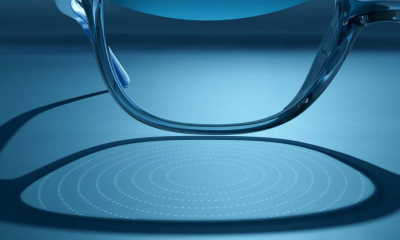


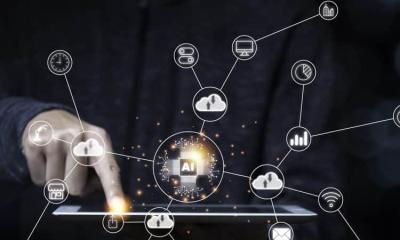

-20251207131533.jpg)





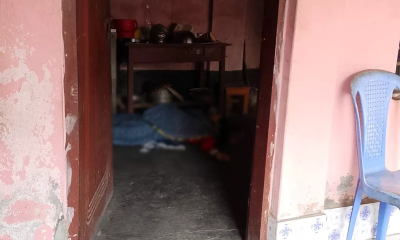
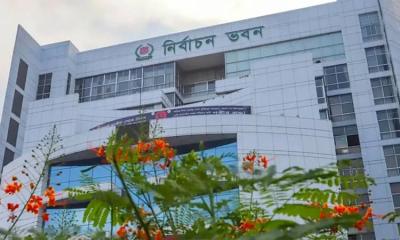




-20251206083331.jpeg)


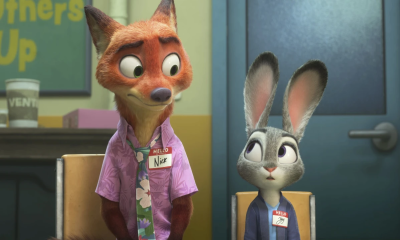
-(25)-20251122062715-20251202031751.jpeg)
-(25)-20251122062715-20251204041734.jpeg)
